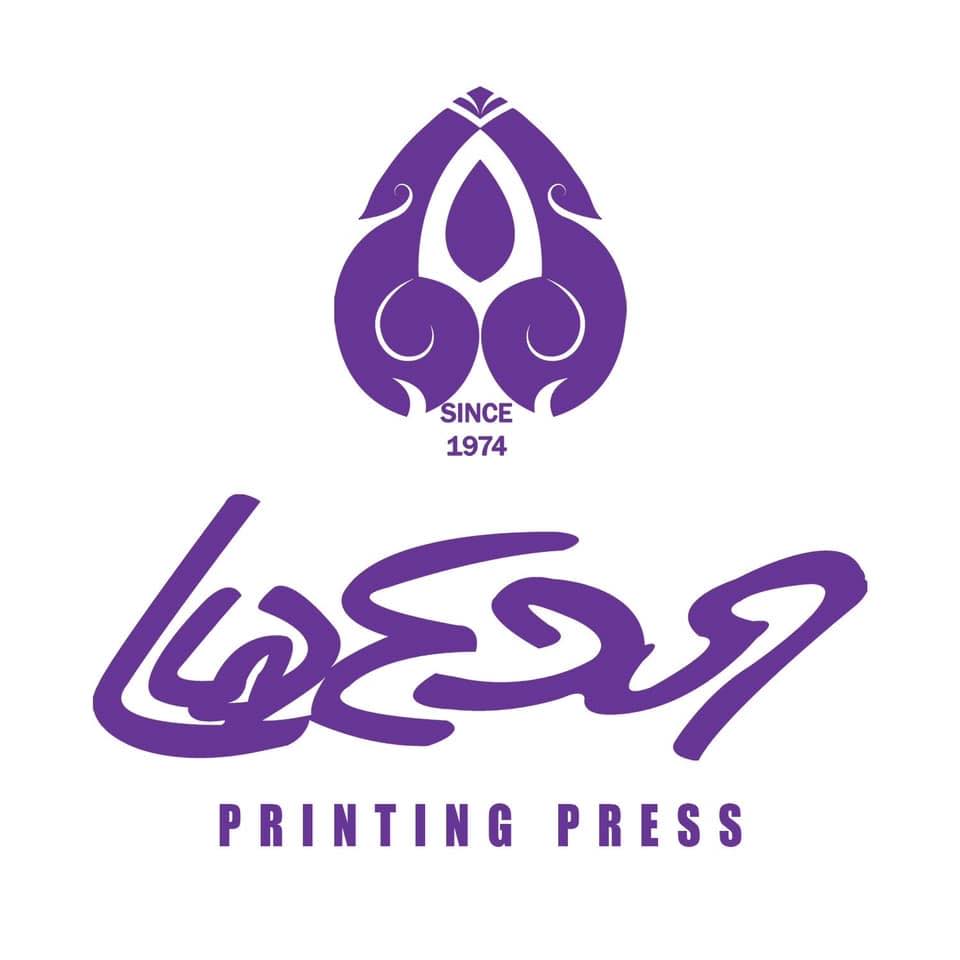ChatGPT: Everything you need to know about the AI chatbot
It could be used to enhance email security by enabling users to recognise potential data security breaches or phishing attempts. It will feature a higher level of emotional intelligence, allowing for more
empathic interactions with users. GPT-5 will also display a significant improvement in the accuracy of how it searches for and retrieves information, making it a more reliable source for learning. For instance, the system’s improved analytical capabilities will allow it to suggest possible medical conditions from symptoms described by the user. GPT-5 can process up to 50,000 words at a time, which is twice as many as GPT-4 can do, making it even better equipped to handle large documents.
- Developers will also find the o1-mini model effective for building and executing multi-step workflows, debugging code, and solving programming challenges efficiently.
- All Claude 3 models show increased capabilities in analysis and forecasting, nuanced content creation, code generation, and conversing in non-English languages like Spanish, Japanese, and French.
- More recently, researchers utilized virtual reality goggles to help people visualize future versions of themselves.
- Researchers from MIT and elsewhere created a system that enables users to have an online, text-based conversation with an AI-generated simulation of their potential future self.
- In addition, Future You users said the conversation felt sincere and that their values and beliefs seemed consistent in their simulated future identities.
There’s also something called “Project Strawberry” which has been teased by Altman. The phrasing caused some confusion online as “GPT Next” was understood to be a literal new model instead of a figurative representation of where OpenAI models are headed next. Over a year has passed since ChatGPT first blew us away with its impressive natural language capabilities.
Apple iOS 18.2 public beta arrives with new AI features, but some remain waitlisted
CEO Sam Altman revealed the two latest resignations in a post on X, along with leadership transition plans. The startup announced it raised $6.6 billion in a funding round that values OpenAI at $157 billion post-money. You can foun additiona information about ai customer service and artificial intelligence and NLP. Led by previous investor Thrive Capital, the new cash brings OpenAI’s total raised to $17.9 billion, per Crunchbase.
Researchers at MIT and elsewhere have developed “Future You” – an AI platform that uses generative AI to allow users to talk with an AI-generated simulation of a potential future you, reports Sammi Caramela for Vice. To help people visualize their future selves, the system generates an age-progressed photo of the user. The chatbot is also designed to provide vivid answers using phrases like “when I was your age,” so the simulation feels more like an actual future version of the individual. For instance, the chatbot could talk about the highlights of someone’s future career or answer questions about how the user overcame a particular challenge. This is possible because ChatGPT has been trained on extensive data involving people talking about their lives, careers, and good and bad experiences.
However, users have noted that there are some character limitations after around 500 words. We will see how handling troubling statements produced by ChatGPT will play out over the next few months as tech and legal experts attempt to tackle the fastest moving target in the industry. Due to the nature of how these models work, they don’t know or care whether something is true, only that it looks true. ChatGPT App That’s a problem when you’re using it to do your homework, sure, but when it accuses you of a crime you didn’t commit, that may well at this point be libel. Multiple enterprises utilize ChatGPT, although others may limit the use of the AI-powered tool. OpenAI has suspended AI startup Delphi, which developed a bot impersonating Rep. Dean Phillips (D-Minn.) to help bolster his presidential campaign.
OpenAI is building next-generation AI GPT-5 — and CEO claims it could be superintelligent
Gemini comes in three sizes, Ultra, Pro and Nano, allowing it to run on anything ranging from mobile devices to data centers. GPT-4.5 would likely be built using more data points than GPT-4, which was created with an incredible 1.8 trillion parameters to consider when responding, compared to GPT 3.5’s mere 175 billion parameters. GPT-4.5 would almost certainly factor more parameters and would be trained on more, as well as more up-to-date data.
Premium ChatGPT users — customers paying for ChatGPT Plus, Team or Enterprise — can now use an updated and enhanced version of GPT-4 Turbo. The new model brings with it improvements in writing, math, logical reasoning and coding, OpenAI claims, as well as a more up-to-date knowledge base. OpenAI has partnered with another news publisher in Europe, London’s Financial Times, that the company will be paying for content access. “Through the partnership, ChatGPT users will be able to see select attributed summaries, quotes and rich links to FT journalism in response to relevant queries,” the FT wrote in a press release. OpenAI planned to start rolling out its advanced Voice Mode feature to a small group of ChatGPT Plus users in late June, but it says lingering issues forced it to postpone the launch to July. OpenAI says Advanced Voice Mode might not launch for all ChatGPT Plus customers until the fall, depending on whether it meets certain internal safety and reliability checks.
Dubbed Future You, the system is aimed at helping young people improve their sense of future self-continuity, a psychological concept that describes how connected a person feels with their future self. Have you ever wanted to travel through time to see what your future self might be like? Concurrently with the new ChatGPT desktop application, ChatGPT apps and the desktop version will receive a new, cleaner UI intended to improve ease of use. Eliminating incorrect responses from GPT-5 will be key to its wider adoption in the future, especially in critical fields like medicine and education. The API is mostly focused on developers making new apps, but it has caused some confusion for consumers, too.
The alpha version is now available to a small group of ChatGPT Plus users, and the company says the feature will gradually roll out to all Plus users in the fall of 2024. The release follows controversy surrounding the voice’s similarity to Scarlett Johansson, leading OpenAI to delay its release. Volkswagen is taking its ChatGPT voice assistant experiment to vehicles in the United States. Its ChatGPT-integrated Plus Speech voice assistant is an AI chatbot based on Cerence’s Chat Pro product and a LLM from OpenAI and will begin rolling out on September 6 with the 2025 Jetta and Jetta GLI models. Unlike ChatGPT, o1 can’t browse the web or analyze files yet, is rate-limited and expensive compared to other models.
OpenAI will also be putting in additional content safeguards for users who aren’t logged in, detailing that it’s put in measures to block prompts and generated responses in more categories and topics. Its announcement post didn’t include any examples of the types of topics or categories that will get this treatment, however. The report clarifies that the company does not have a set release date for the new model and is still training GPT-5. This includes “red teaming” the model, where it would be challenged in various ways to find issues before the tool is made available to the public. The safety testing has no specific timeframe for completion, so the process could potentially delay the release date. OpenAI reassured people that GPT-4o has “new safety systems to provide guardrails on voice outputs,” plus extensive post-training and filtering of the training data to prevent ChatGPT from saying anything inappropriate or unsafe.
Chris Smith has been covering consumer electronics ever since the iPhone revolutionized the industry in 2008. When he’s not writing about the most recent tech news for BGR, he brings his entertainment expertise to Marvel’s Cinematic Universe and other blockbuster franchises. Finally, once GPT-5 rolls out, we’d expect GPT-4 to power the free version of ChatGPT. Before we get to ChatGPT GPT-5, let’s discuss all the new features that were introduced in the recent GPT-4 update. We’re excited to see what you create with Claude 3 and hope you will give us feedback to make Claude an even more useful assistant and creative companion. Claude 3 Sonnet strikes the ideal balance between intelligence and speed—particularly for enterprise workloads.
At the time of writing, GPT-4.5 hasn’t been officially announced, so we don’t know for sure what it will be able to do. Another source tells The Verge that engineers inside Microsoft — OpenAI’s main partner for deploying AI models — are preparing to host Orion on Azure as early as November. While Orion is seen inside OpenAI as the successor to GPT-4, it’s unclear if the company will call it GPT-5 externally. OpenAI plans to launch Orion, its next frontier model, by December, The Verge has learned. Sam Altman, the CEO of OpenAI, addressed the GPT-5 release in a mid-April discussion on the threats that AI brings.
Apple announced at WWDC 2024 that it is bringing ChatGPT to Siri and other first-party apps and capabilities across its operating systems. The ChatGPT integrations, powered by GPT-4o, will arrive on iOS 18, iPadOS 18 and macOS Sequoia later this year, and will be free without the need to create a ChatGPT or OpenAI account. Features exclusive to paying ChatGPT users will also be available through Apple devices. After a big jump following the release of OpenAI’s new GPT-4o “omni” model, the mobile version of ChatGPT has now seen its biggest month of revenue yet. The app pulled in $28 million in net revenue from the App Store and Google Play in July, according to data provided by app intelligence firm Appfigures.
What about GPT-5?
One user apparently made GPT-4 create a working version of Pong in just sixty seconds, using a mix of HTML and JavaScript. One of the biggest changes we might see with GPT-5 over previous versions is a shift in focus from chatbot to agent. This would allow the AI model to assign tasks to sub-models or connect to different services and perform real-world actions on its own. Chat GPT-5 is very likely going to be multimodal, meaning it can take input from more than just text but to what extent is unclear. Google’s Gemini 1.5 models can understand text, image, video, speech, code, spatial information and even music. OpenAI’s event will undoubtedly amplify the battle between two of the most funded AI companies on Earth.
Sam Altman, OpenAI CEO, commented in an interview during the 2024 Aspen Ideas Festival that ChatGPT-5 will resolve many of the errors in GPT-4, describing it as “a significant leap forward.” Given recent accusations that OpenAI hasn’t been taking safety seriously, the company may step up its safety checks next version of chat gpt for ChatGPT-5, which could delay the model’s release further into 2025, perhaps to June. CEO Sam Altman confirmed this in a recent interview, and claimed it could possess superintelligence, but the company would need further investment from its long-time partner Microsoft to make it a reality.
Reuters reports that OpenAI is working with TSMC and Broadcom to build an in-house AI chip, which could arrive as soon as 2026. It appears, at least for now, the company has abandoned plans to establish a network of factories for chip manufacturing and is instead focusing on in-house chip design. Altman also admitted to using ChatGPT “sometimes” to answer questions throughout the AMA. OpenAI is facing internal drama, including the sizable exit of co-founder and longtime chief scientist Ilya Sutskever as the company dissolved its Superalignment team.
OpenAI does have a disclaimer that states that it is storing your inputs to potentially use to improve ChatGPT by default whether you’re signed in or not, which I suspected was the case. It also states that you can turn this off via ChatGPT’s settings, and this can be done whether you have an account or not. The researchers acknowledge the support of Thanawit Prasongpongchai, a designer at KBTG and visiting scientist at the Media Lab. Future You is much more detailed than what a person could come up with by just imagining their future selves,” says Maes.
Google is developing Bard, an alternative to ChatGPT that will be available in Google Search. Meanwhile, OpenAI has not stopped improving the ChatGPT chatbot, and it recently released the powerful GPT-4 update. Claude 3 Haiku is our fastest, most compact model for near-instant responsiveness. Users will be able to build seamless AI experiences that mimic human interactions. In addition to producing more trustworthy responses, we will soon enable citations in our Claude 3 models so they can point to precise sentences in reference material to verify their answers.
ChatGPT: Everything you need to know about the AI-powered chatbot – TechCrunch
ChatGPT: Everything you need to know about the AI-powered chatbot.
Posted: Fri, 01 Nov 2024 17:45:00 GMT [source]
Further, OpenAI is also said to have alluded to other as-yet-unreleased capabilities of the model, including the ability to call AI agents being developed by OpenAI to perform tasks autonomously. According to a report from Business Insider, OpenAI is on track to release GPT-5 sometime in the middle of this year, likely during summer. The demo of GPT-4o’s real-time voice capabilities in the ChatGPT app at the livestream sounded quite natural, including several examples of how the model will respond seamlessly when interrupted. ChatGPT sometimes struggled to distinguish what images it was supposed to be looking at, but its responsiveness was remarkable. While GPT-3.5 is free to use through ChatGPT, GPT-4 is only available to users in a paid tier called ChatGPT Plus.
But we are expecting something new this year, and I would still put money on it being the next big upgrade to the GPT family. While we are now starting to see feature add-ons to chatbots with generative AI — ChatGPT Canvas or Claude Artifacts are both good examples of this — those rumors often surround model changes. An update to a model is the equivalent of upgrading to a new operating system, going from iOS 17 to 18 or Windows 10 to 11, rather than a simple feature update. “We make technology. People use it to build new things, express their creative ideas, and society improves.”
Among those principles are a baseline belief that AI models should benefit humanity and the end-user and abide by laws and social norms. OpenAI CEO Sam Altman has revealed what the future might hold for ChatGPT, the artificial intelligence (AI) chatbot that’s taken the world by storm, in a wide-ranging interview. While speaking to Lex Friedman, an MIT artificial intelligence researcher and podcaster, Altman talks about plans for GPT-4 and GPT-5, as well as his very temporary ousting as CEO, and Elon Musk’s ongoing lawsuit. ChatGPT Plus users will get access to the app first, starting today, and a Windows version will arrive later in the year. For example, users can ask the GPT-4o-powered ChatGPT a question and interrupt ChatGPT while it’s answering.
In doing so, it also fanned concerns about the technology taking away humans’ jobs — or being a danger to mankind in the long run. Even though OpenAI released GPT-4 mere months after ChatGPT, we know that it took over two years to train, develop, and test. If GPT-5 follows a similar schedule, we may have to wait until late 2024 or early 2025. OpenAI has reportedly demoed early versions of GPT-5 to select enterprise users, indicating a mid-2024 release date for the new language model.
This simulated future self can answer questions about what someone’s life in the future could be like, as well as offer advice or insights on the path they could follow. OpenAI’s ChatGPT has taken the world by storm, highlighting how AI can help with mundane tasks and, in turn, causing a mad rush among companies to incorporate AI into their products. GPT is the large language model that powers ChatGPT, with GPT-3 powering the ChatGPT that most of us know about. OpenAI has then upgraded ChatGPT with GPT-4, and it seems the company is on track to release GPT-5 too very soon.
In an email, OpenAI detailed an incoming update to its terms, including changing the OpenAI entity providing services to EEA and Swiss residents to OpenAI Ireland Limited. The move appears to be intended to shrink its regulatory risk in the European Union, where the company has been under scrutiny over ChatGPT’s impact on people’s privacy. Beginning in February, Arizona State University will have full access to ChatGPT’s Enterprise tier, which the university plans to use to build a personalized AI tutor, develop AI avatars, bolster their prompt engineering course and more. As part of a test, OpenAI began rolling out new “memory” controls for a small portion of ChatGPT free and paid users, with a broader rollout to follow. The controls let you tell ChatGPT explicitly to remember something, see what it remembers or turn off its memory altogether. Note that deleting a chat from chat history won’t erase ChatGPT’s or a custom GPT’s memories — you must delete the memory itself.
An hour later, OpenAI released its own frontier model, the final version of GPT-4 Turbo. GPT-4 Turbo and Gemini Pro 1.5 are “multimodal” systems, able to accept more than just text. Auto-GPT is an open-source tool initially released on GPT-3.5 and later updated to GPT-4, capable of performing tasks automatically with minimal human input. GPT-4 lacks the knowledge of real-world events after September 2021 but was recently updated with the ability to connect to the internet in beta with the help of a dedicated web-browsing plugin. Microsoft’s Bing AI chat, built upon OpenAI’s GPT and recently updated to GPT-4, already allows users to fetch results from the internet.
“We could see significant improvements in customer service bots, offering more coherent and contextually appropriate interactions without human intervention. In digital marketing, content generation could become more sophisticated and tailored, enhancing engagement strategies. OpenAI may be close to unveiling ChatGPT-5, its latest iteration of large language models, and the artificial intelligence (AI) world is buzzing with possibilities. Much of the most crucial training data for AI models is technically owned by copyright holders. OpenAI, along with many other tech companies, have argued against updated federal rules for how LLMs access and use such material.
The company says the app is an early version and is currently only available to ChatGPT Plus, Team, Enterprise, and Edu users with a “full experience” set to come later this year. The company says it will launch a trusted tester program for Bard Advanced before opening it up more broadly to users early next year. In addition, Google will be putting Bard Advanced through additional safety checks prior to its launch. The version ChatGPT of Bard with Gemini Pro will first become available in English in more than 170 countries and territories worldwide, with more languages and countries, including the EU and U.K., soon. Initial estimations and rumors based on the early 2023 launch of GPT-4 targeted GPT-4.5 for a September/October 2023 release, but that seems unlikely now, considering how close we are and the lack of any kind of announcement to that effect.
Progress in AI has lately become more incremental and more reliant on innovations in model design and training rather than brute-force scaling of model size and computation, as GPT-4 did. Anthropic’s new model, called Claude 3.5 Sonnet, is an upgrade to its existing Claude 3 family of AI models. It is more adept at solving math, coding, and logic problems as measured by commonly used benchmarks. Anthropic says it is also a lot faster, better understands nuances in language, and even has a better sense of humor. One early method aimed at improving future self-continuity had people write letters to their future selves.
The model delivers “real-time” responsiveness, OpenAI says, and can even pick up on nuances in a user’s voice, in response generating voices in “a range of different emotive styles” (including singing). The platform has long offered a voice mode that transcribes the chatbot’s responses using a text-to-speech model, but GPT-4o supercharges this, allowing users to interact with ChatGPT more like an assistant. Neither Apple nor OpenAI have announced yet how soon Apple Intelligence will receive access to future ChatGPT updates. While Apple Intelligence will launch with ChatGPT-4o, that’s not a guarantee it will immediately get every update to the algorithm. However, if the ChatGPT integration in Apple Intelligence is popular among users, OpenAI likely won’t wait long to offer ChatGPT-5 to Apple users. Altman hinted that GPT-5 will have better reasoning capabilities, make fewer mistakes, and “go off the rails” less.







